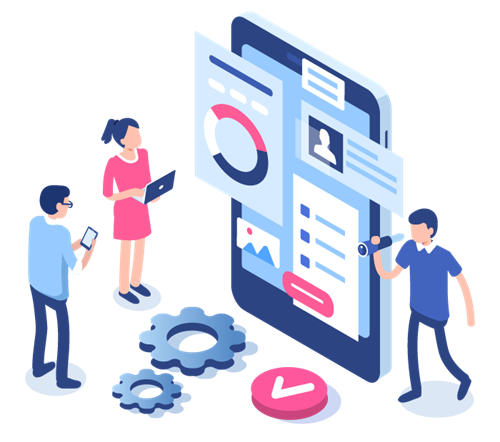The Role of AI in Government CX
by Erina Suzuki | Published On May 5, 2025
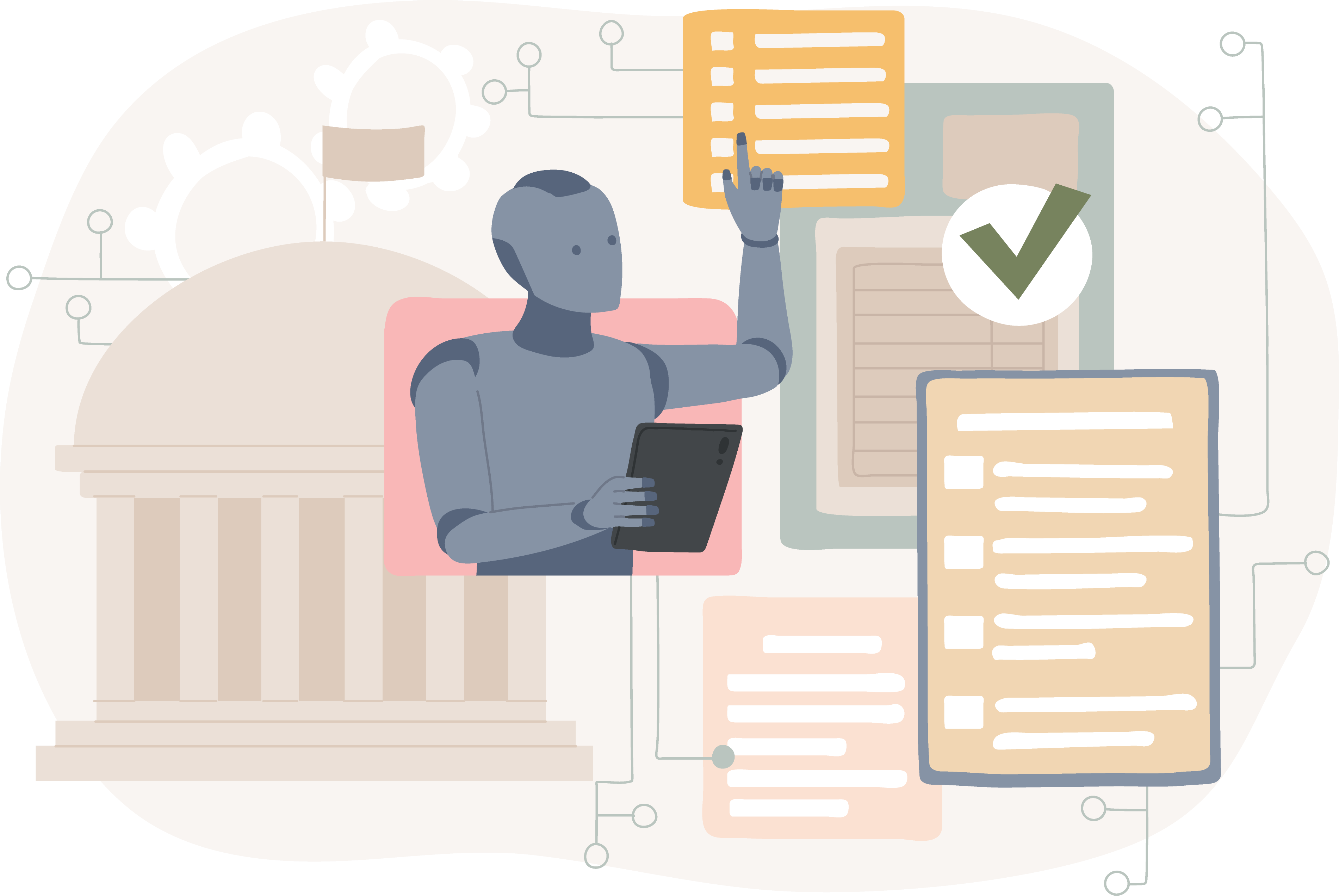
We’re living in a world where grocery orders arrive in hours and digital assistants respond to our every question. It’s only natural that citizens would expect the same kind of speed, convenience, and simplicity from government service providers. That’s where AI in government processes makes a huge difference.
According to a Deloitte study, satisfaction with “government customer service,” specifically digital services, lags behind private sector customer satisfaction levels by around 21%.
It’s easy to see why. Government and public sector groups have a lot on their shoulders – they’re responsible for shaping policies, driving national growth, and maintaining public safety. But they can’t afford to overlook the importance of customer (or citizen) experience either.
AI is helping public sector agencies bridge CX gaps, automating routine tasks, improving overall productivity, and minimizing wait times for callers. In fact, one study found AI has reduced processing times for some government services from 40 days to just 18 days on average.
It’s not just about efficiency either. AI enhances the accessibility of customer service, opens the door for more personalized experiences, and enables access to valuable data.
This article will introduce how AI is reshaping government CX, leading to happier constituents, more effective teams, and faster growth.
The Rise of AI in Government and Public Service
We’ve come a long way from the days when AI (Artificial Intelligence) was considered a futuristic concept. These days, it’s so commonplace across industries, it’s almost mundane. Companies are using AI to automate repetitive tasks (like data entry), streamline IVR experiences with bots that can understand natural language requests, and even handle everyday service inquiries.
AI solutions enhanced by natural language processing capabilities, robotic process automation, and machine learning are helping government and private sector groups accomplish more with less.
Right now, government groups and public sector bodies are constantly exploring new ways to add artificial intelligence into their processes. In fact, 70% of government groups are piloting and planning new AI use cases. Just some common examples include:
- Chatbots for Engagement: Automated chatbots can manage a high volume of citizen questions - from how to renew a driver’s license to how to apply for certain permits - without tying up human agents. Estonia’s AI-driven virtual assistant, Kratt, for instance, can guide citizens on tasks ranging from tax inquiries to job searches, delivering consistent, around-the-clock assistance.
- Data Analytics for Policy Decisions: AI systems sift through massive datasets to reveal critical insights that guide policymaking. Tools like AI Multiple can comb through diverse metrics - economic, social, environmental - to model outcomes and help officials decide how to allocate resources or design legislation.
- Healthcare Innovation: Medical applications of AI range from diagnostic algorithms that identify early signs of diseases (by analyzing medical images) to predictive analytics that forecast patient admissions in public hospitals. This can drastically improve patient flow management, reduce overcrowding, and inform public health strategies.
That’s just the beginning, with new discoveries happening in the worlds of agentic AI, generative AI, and machine learning all the time – who knows what could be next?
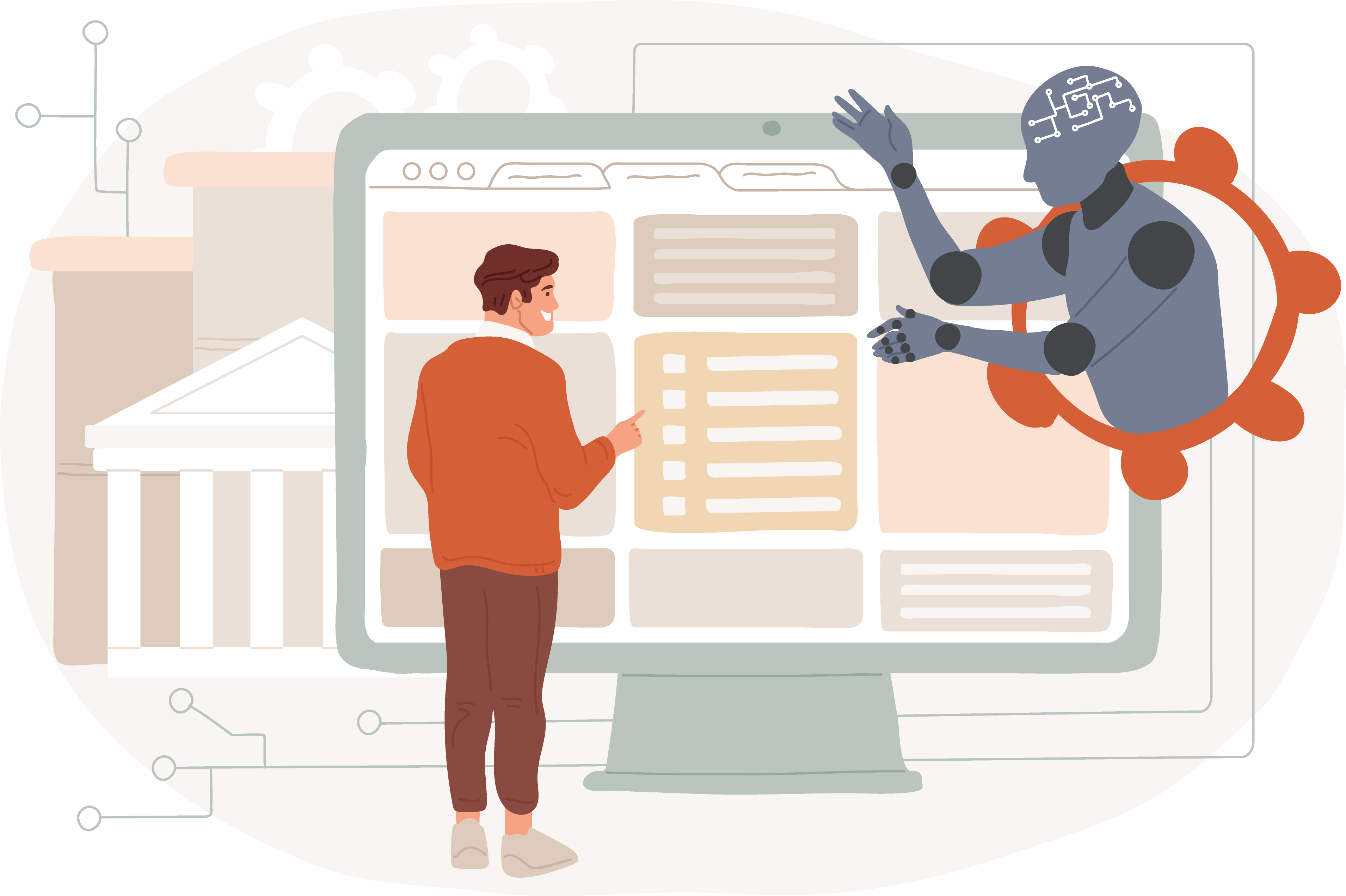
The Benefits of AI in Government Customer Service Delivery
Like any AI adopter, government groups do face challenges bringing AI into customer service strategies – from figuring out how to train bots with relevant data, to ensuring they stay compliant with data privacy and security laws. But if government groups can navigate this journey correctly, the results will be incredible too. The major benefits include:
Improved Efficiency
Public sector employees deal with a lot of mundane tasks, from sorting documents, to approving requests and routing citizen inquiries. With AI to handle those chores automatically, staff can focus on tasks that require creativity, empathy, or the ability to make complex decisions – boosting business outcomes.
AI-driven tools don’t just complete tasks faster; they also reduce the risk for errors, which can be costly and damaging in the public sector industry.
Cost Savings
Governments don’t have unlimited budgets – they need to find ways to cut costs, just like businesses. AI can seriously cut costs by streamlining operations and reducing manual tasks. Analysts even think AI could help save the UK government £45 billion per year.
Money saved can fund improvements in digital infrastructure, cybersecurity, and workforce development programs - essential components of a modern public sector.
Greater Citizen Satisfaction
Government services have a reputation for long wait times and convoluted forms. AI helps alleviate these pain points by making processes more intuitive and user-friendly. AI solutions make it easier for governments to deliver 24/7 support to customers across channels – in any language.
They can even personalize every interaction, analyzing customer profiles and previous interactions to deliver more tailored responses. More relevant, personalized interactions keep citizens happy. Happier citizens lead to happier nations.
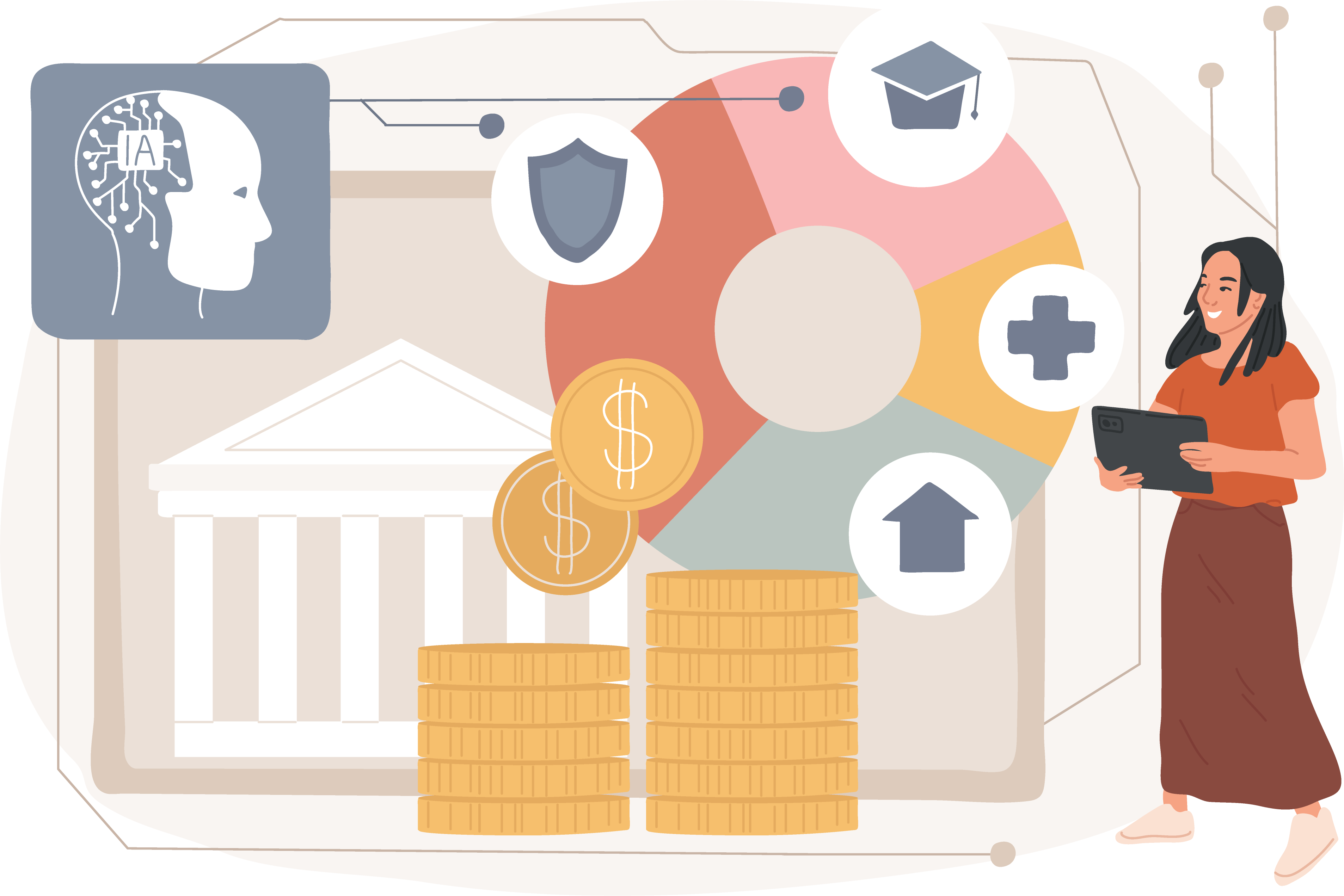
AI Use Cases for Government Contact Centers
There are plenty of different opportunities for AI in government processes. In the US, police departments can use AI to help them identify crime hotspots. In Australia, cities like Sydney use AI to detect potholes through camera-equipped vehicles, to help improve infrastructure.
But right now, one of the main areas most government and public sector groups are focusing on is customer service. Government contact centers stand at the front lines of citizen engagement. These hubs handle everything from routine inquiries (like “What’s my property tax bill?”) to time-sensitive emergencies (“There’s a gas leak in my neighborhood!”).
In recent years, the sheer volume of citizen interactions- plus heightened expectations for speed and convenience - has stretched contact centers thin. Here’s how AI can help.
1. Always-On Customer Service
Like companies, many government offices keep fixed business hours, but citizens expect 24/7 assistance. AI-driven Interactive Voice Response (IVR) systems and chatbots make around-the-clock support a reality without overburdening human staff.
These tools can handle routine inquiries 24/7, share information, and even proactively update citizens on potential emergencies and threats. For instance, the Dubai Electricity and Water Authority uses an AI system to give citizens a digital interactive hub where they can always report issues, get support, or access insights at a moment’s notice.
The great thing about using AI for always-on customer service is that these tools can also adapt to different citizen needs. Most AI bots are capable of communicating with customers in different languages, or through various mediums (text or voice), based on their requirements.
2. Crisis Management
Government groups deal with a lot of emergencies. When disaster strikes - be it a flood, hurricane, or public health emergency - government contact centers often see call volumes spike exponentially. Quick, accurate information can save lives and resources.
AI models can analyze weather data, infrastructure vulnerabilities, and even social media activity to forecast impending disasters. They can automatically send information to emergency responders and citizens alike, speeding up issue resolution times.
For example, during the COVID-19 pandemic, many governments deployed AI chatbots to address a deluge of citizen queries about testing sites, symptoms, and safety guidelines. These bots reduced the strain on human operators and provided consistent, up-to-date information.
3. Personalizing Customer Support
Public sector contact centers often serve diverse populations - people of varying ages, abilities, and languages. AI helps cater to these differences through personalized and inclusive solutions. AI-driven chatbots and agents can offer real-time support in languages from Spanish to Mandarin, ensuring no citizen is left behind due to language barriers.
Chatbots and IVR can also provide information through text or voice, assisting visually or hearing-impaired users. By analyzing a citizen’s past interactions or profile data, AI can also deliver relevant guidance faster. For example, if someone regularly queries about unemployment benefits, the system can proactively offer information about job fairs or skill-building programs.
With sentiment analysis capabilities, some AI solutions can even adapt their strategy in real-time, determining when to route a caller to a human agent based on their tone.
4. Intelligent Case Management
Governments process countless “cases” - from license applications to welfare claims, building permits to immigration files. Using AI in case management allows groups to automate data collection, triage urgent cases, and even draft reports faster.
For instance, in England, social workers utilize an AI system called Magic Notes, which records conversations, drafts letters, and suggests actions, reducing administrative burdens and allowing more focus on client interaction. This innovation has the potential to save up to £2 billion annually by minimizing time spent on paperwork.
5. Voice of the Constituent Insights
Public sector groups need data – just like businesses, and contact centers are great for diving into and understanding unsolicited feedback. Citizens call or write in to complain, ask questions, or offer suggestions. AI can analyze these interactions across phone, email, and social media to extract actionable insights.
For instance, artificial intelligence tools with natural language processing and sentiment analysis capabilities can share valuable information with governments. They can evaluate word choice, tone, and patterns to determine how citizens feel about a particular policy or service. This can help governments make data-driven decisions that address public concerns more effectively.
Plus, AI analysis can help with policy refinement. If a surge of negative calls about a new tax rule is detected by an AI tool, agencies can revisit the communication strategy or tweak the rule itself. By systematically aggregating this data, policymakers gain a clearer view of constituent needs.
6. Proactive Outreach
In many cases, citizens need help but don’t know where to find it or how to ask. AI breaks this barrier by analyzing large datasets - like census, employment, and health data -to predict who might need specific services. Then, it can automatically initiate outreach.
For instance, during public health initiatives - such as vaccination drives - AI can identify at-risk groups based on demographics or health records, then send out customized reminders via text or email.
In the social welfare sector, predictive models can spot families who might be at risk of homelessness due to job loss or medical expenses, triggering a caseworker visit or a fast-tracked application for housing assistance. AI tools can even proactively reach out to a citizen when they’re likely to be affected by a new initiative, such as the development of new infrastructure in their town.
7. Data Privacy and Security Management
Many government groups do worry about implementing AI into their processes based on the fact that it requires access to large volumes of data – which can create security concerns. However, AI in government processes can also help to protect data privacy and compliance.
For instance, AI systems can flag unusual activity, such as a sudden surge in login attempts from unfamiliar IP addresses, enabling immediate countermeasures. Some AI systems can even power more effective authentication methods, reducing the risk of identity fraud by verifying users based on unique elements in their voice.
Plus, many agencies are being proactive about the risks of AI too, introducing roles like “AI Security Officers” who specialize in overseeing deployments from a compliance perspective.
8. Data-Driven Decision Making
Contact centers generate copious data on citizen behavior, service effectiveness, and policy gaps. AI refines these raw numbers into digestible, actionable intelligence that government groups can use for a variety of different purposes.
For instance, by analyzing call logs related to road damage or traffic congestion, transportation agencies can identify bottlenecks and plan roadway expansions more efficiently. This ensures that taxpayer funds go to areas with the greatest need.
In healthcare, AI can detect spikes in calls related to flu symptoms or COVID-19 queries, informing health departments about potential outbreaks. AI powered tools also give governments the insights they need to more effectively allocate resources throughout the contact center, by predicting potential spikes in call volume, and helping with staffing strategies.
9. Intelligent Self-Service Portals
AI isn’t just enhancing self-service through chatbots and intelligent IVR technologies. It’s also powering intuitive portals with agents that can guide citizens through numerous tasks. For instance, AI-powered tools can generate custom FAQs based on how users interact with the site, ensuring they get the most relevant answers quickly.
Some portals also use AI to auto-populate fields and verify information in real time. This helps citizens avoid simple errors - like typos in addresses or Social Security numbers - that could delay processing.
When the path to completing a form or finding a service is clear and intuitive, fewer users give up midway. This boosts overall adoption of online services and cuts down on in-person visits, which can be a logistical strain during emergencies.
AI in Government CX: Smarter, Stronger Service
The rise of AI in government is reshaping entire nations at an incredible speed. Intelligent tools are upgrading how public services are delivered – and how citizens engage with them. From enabling 24/7 customer support and crisis management, to powering proactive outreach, AI solutions offer a huge range of benefits to government groups, and their constituents.
Obviously, there are challenges. Ethical considerations, data privacy, and transparent governance must be top priorities. Citizens are far more likely to trust AI when they see strong safeguards protecting their personal information and when agencies communicate openly about how and why AI tools are used.
For public sector leaders though, the question is no longer “if” AI adoption makes sense, but rather “how quickly and responsibly” they can scale these innovations.
If you’re looking for a new way to innovate in the government sector, contact ComputerTalk to learn more about how our AI solutions can help you transform citizen service.
More from our blog
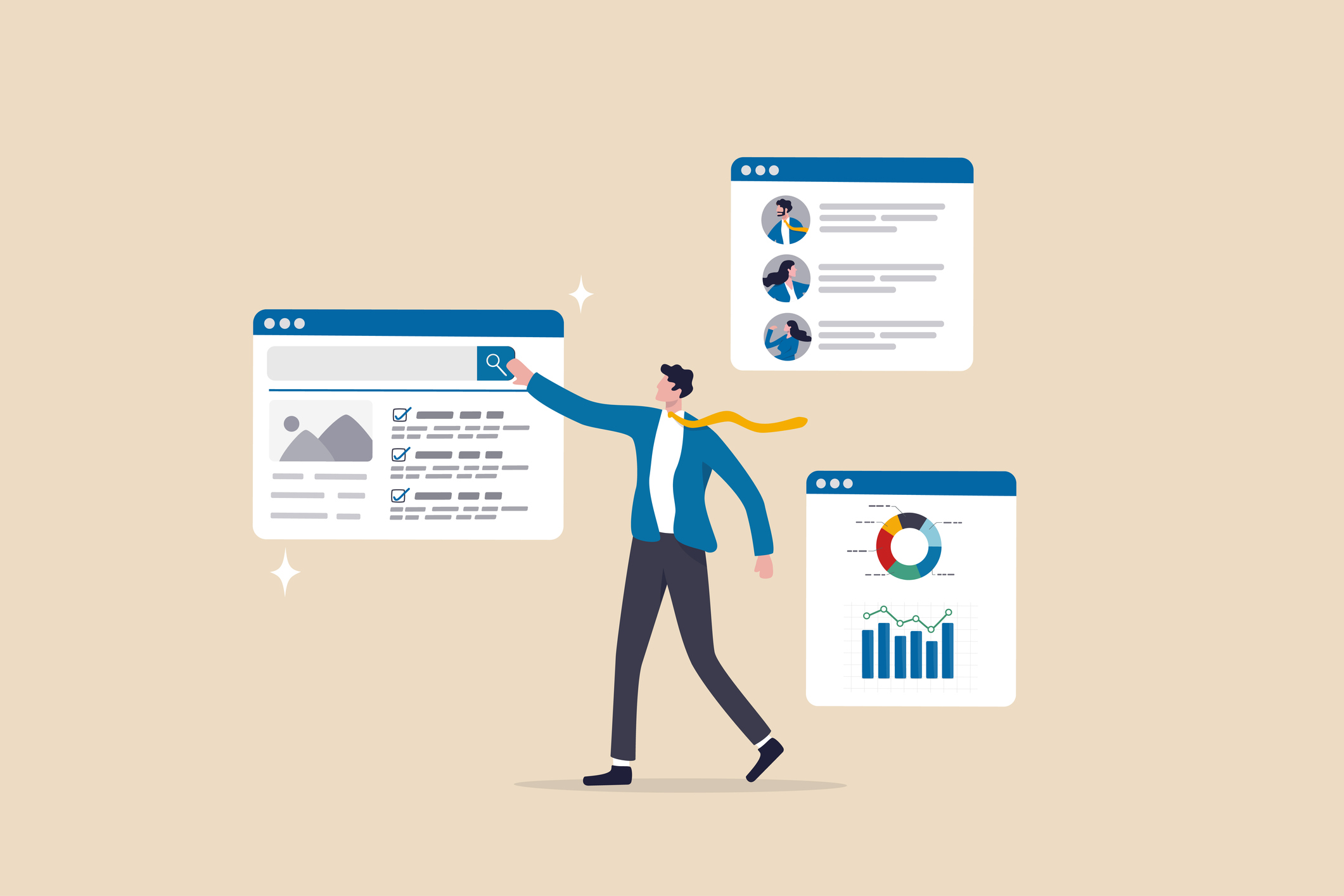 Nine in 10 businesses with more than 10 employees use CRM software.
Nine in 10 businesses with more than 10 employees use CRM software.
 Every minute of downtime risks lost revenue and missed service commitments. With cloud-based solutions and tools like icePhone, your business can deliver consistent, 24/7 customer service.
Every minute of downtime risks lost revenue and missed service commitments. With cloud-based solutions and tools like icePhone, your business can deliver consistent, 24/7 customer service.
 Call centers can improve their operations and deliver superior customer service with powerful software integrations. These tools make it easier to streamline processes so that customers get the best possible experience from your team.
Call centers can improve their operations and deliver superior customer service with powerful software integrations. These tools make it easier to streamline processes so that customers get the best possible experience from your team.

